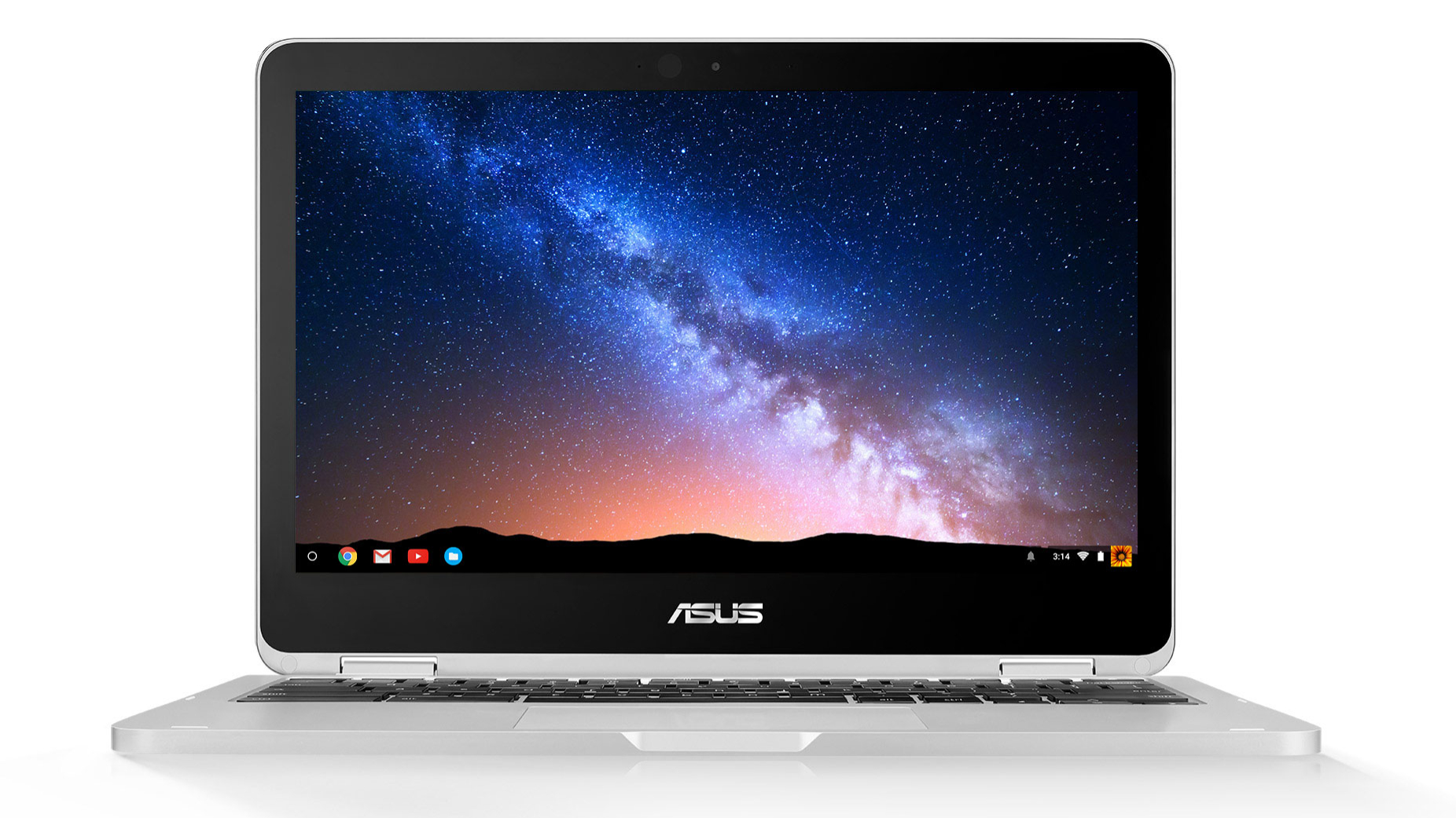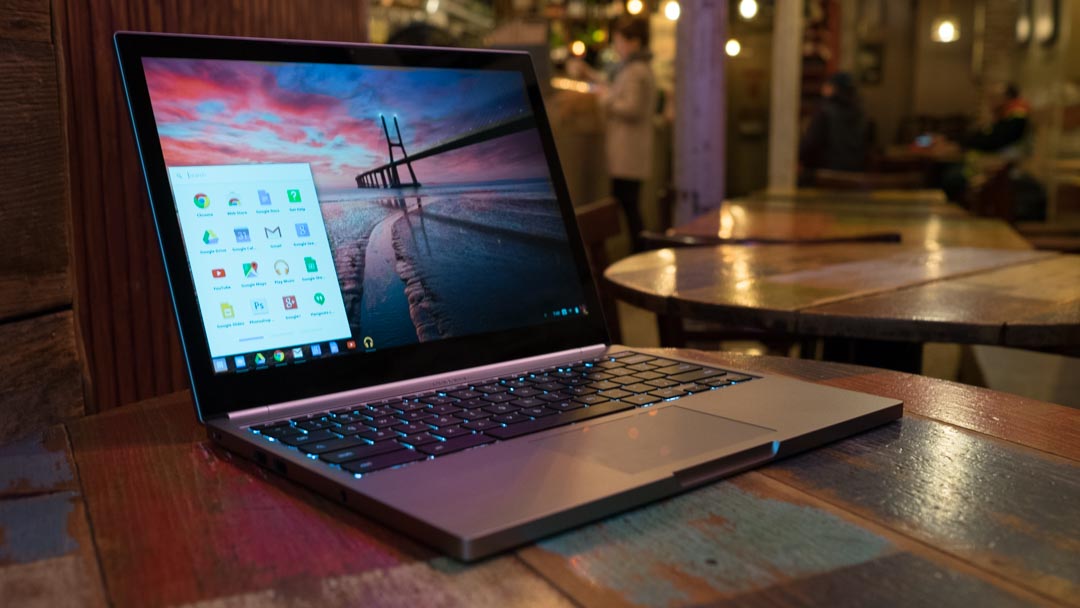Why new Chromebooks make Android tablets completely irrelevant

Ever wonder where all of the Android tablets went?
Lately, it seems like it’s just Amazon and a few other manufacturers keeping the good ship afloat. And, as it turns out, there’s a likely explanation for the recent quiet in a sector where there was once an endless flurry of options.
Chromebooks. Yep, Chromebooks. Google announced that all 2017 models will run Android apps. So what’s the point of a tablet anymore?
As appealing as they seemed at one point, I say "good riddance” to them. Those pricey slates never really helped me get all that much done anyway.
Despite their small, tote-friendly footprint, bringing one along usually resulted in regret that I hadn’t brought something more capable, even if it was heavier.
Sure, the split-screen modes that are available in iOS 10 and Android Nougat are helpful, as are the usually-not-included keyboard and mouse that work to get something that's close to working on a laptop, but it's not the same.
A tablet running a mobile operating system has never been a good laptop substitute, just a barely passable one.
Tablet sales have slowed on the whole and we’re now seeing more and more people putting their money toward slim Ultrabooks or feature-packed 2-in-1s like the Microsoft Surface Pro 4 and its many competitors.
- For an even bigger upgrade, the Surface Book is a top-notch choice

This shift wasn’t necessarily expected, as tablets were incredibly popular a few years back. But at least to me, Google’s move to make the full catalog of Android apps compatible on Chromebooks isn't too much of a surprise.
These changes will speak strongly to both Android fans who have been pining for a new tablet and Chromebook onlookers who have been previously burned by a lack of apps.
Here’s how 2017 Chromebooks are changing the game for the Android tablet sector (and really, the sector as a whole).
Filling in the blanks
Comparing Android to Chrome OS quickly reveals their respective strengths and also a few flaws.
Android tablets tend to be more powerful than Chromebooks, with flagship models borrowing attractive specs from the most popular smartphones. As such, the gaming and multimedia potential of an Android tablet is more than a few leaps ahead of what Google’s internet-reliant laptops can put out.
But the key strength of Chrome OS is that it's more akin to a personal computing operating system. More like Windows 10 and macOS Sierra than the restrictive iOS and Android. Thus, browsing the internet and typing up a document are easier and arguably more intuitive thanks to a larger screen and full keyboard.

Despite the strength in productivity Chrome OS has had over Android, its biggest flaw is what Android has always been the best at: having millions of apps.
With full access to the Google Play Store, new Chromebooks are bridging the divide between Chrome OS and Android. And it’s about time.
This comes after Microsoft’s ambitious, but flawed attempt to unify its lineup of devices under a single umbrella, Windows 10. Apple, too, is slowly but surely beginning to meld the experiences from Apple Watch, iPhone and macOS together.
Now, it’s Google’s turn.
Chromebook: a reintroduction
2017’s early lineup of Chromebooks aren’t just a fresh coat of paint, they’re more of an overhaul that incorporates the learnings of the great Android tablet experiment.
In the case of the new Samsung Chromebook Pro, $549 gets you an all-in-one solution that comes with a keyboard, a host of modern ports, a hexa-core chipset, a microSD slot for apps, and a Quad HD screen.
Some of those specs are par for the Chromebook course, but it’s easy to see where the desired tablet features are bleeding in. Heck, Samsung’s latest is even a 2-in-1 that can essentially transform into a tablet.
Despite the implications of the new Chromebooks, Samsung continues to be one of the few manufacturers making strong entries in the Android tablet market. The Samsung Galaxy Tab S2 is currently the best tablet that’s not an iPad and rumor has it, the company will unveil the Samsung Galaxy Tab S3 at MWC 2017 in March.
But flipping back to Samsung’s Chromebook Plus, it’s just one of many options available in 2017 that can run Android apps natively. And this move means nothing but good news for the consumer.
Sign up for breaking news, reviews, opinion, top tech deals, and more.

We’ll see a lot of the slick design that’s usually reserved for flagship tablets now coming over to the Chromebook world. Not just that, the value will just keep getting better.
Think about it. It’s currently difficult to come by a Chromebook that can rival the Google Pixel C in performance. Until now, you’d either have to buy Google’s now-discontinued Chromebook Pixel or spend about $500 on the Dell Chromebook 13.
That trend is quickly changing with the 2017 Chromebooks. Aside from Samsung’s, the Asus Chromebook Flip C302 rivals its impressive design by looking awfully similar to a MacBook Pro. It will feature an Intel Core M processor and boast 10 hours of battery life, to name a few of its most impressive specs. Name me one tablet that can rival it at a $499 price point?
Android tablets have mostly disappeared. But you shouldn’t fret because from the look of it, these new Chromebooks make it clear that they intend to carry on the legacy while leaving behind the gimmicks. And I’m totally onboard.
But I want to know what you think. Will you miss having a large, varied selection of tablets to choose from?
- If you're still in the market, here's our list of the best tablets

Cameron is a writer at The Verge, focused on reviews, deals coverage, and news. He wrote for magazines and websites such as The Verge, TechRadar, Practical Photoshop, Polygon, Eater and Al Bawaba.